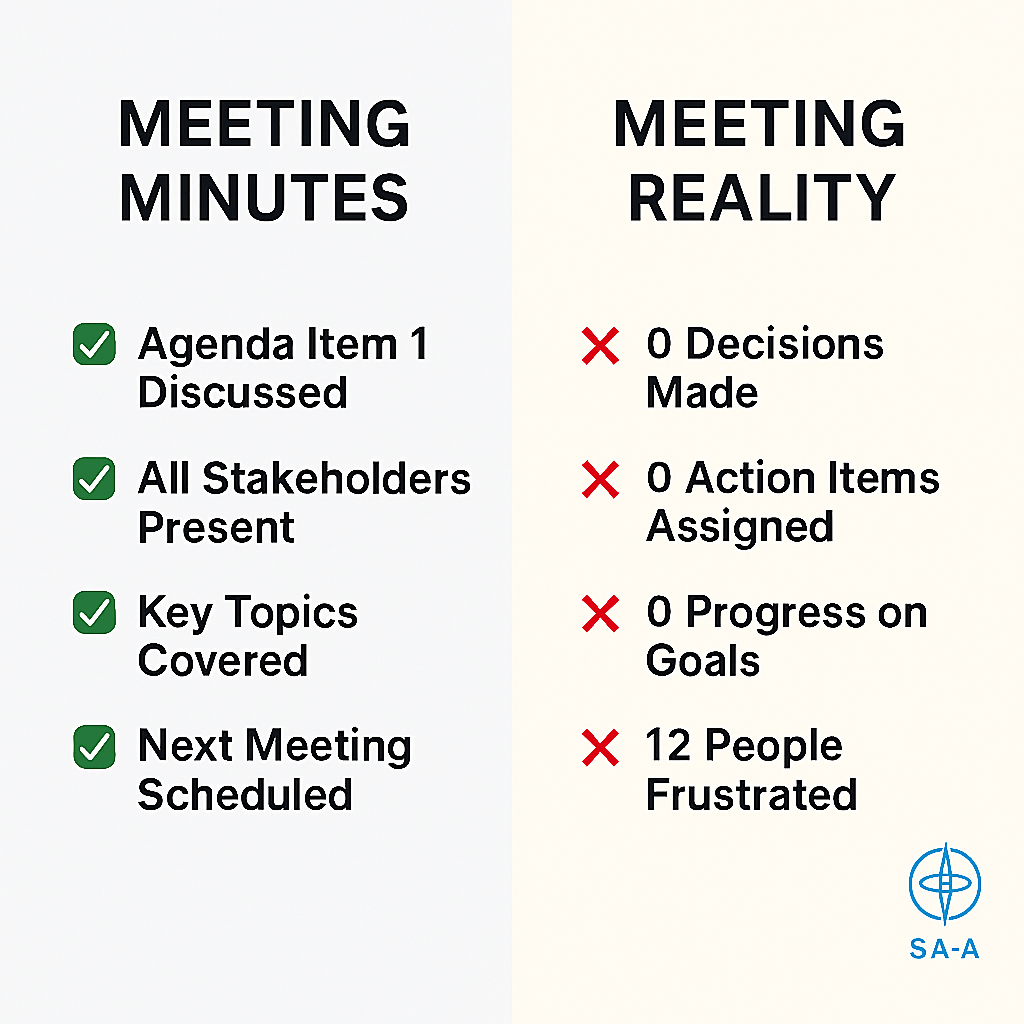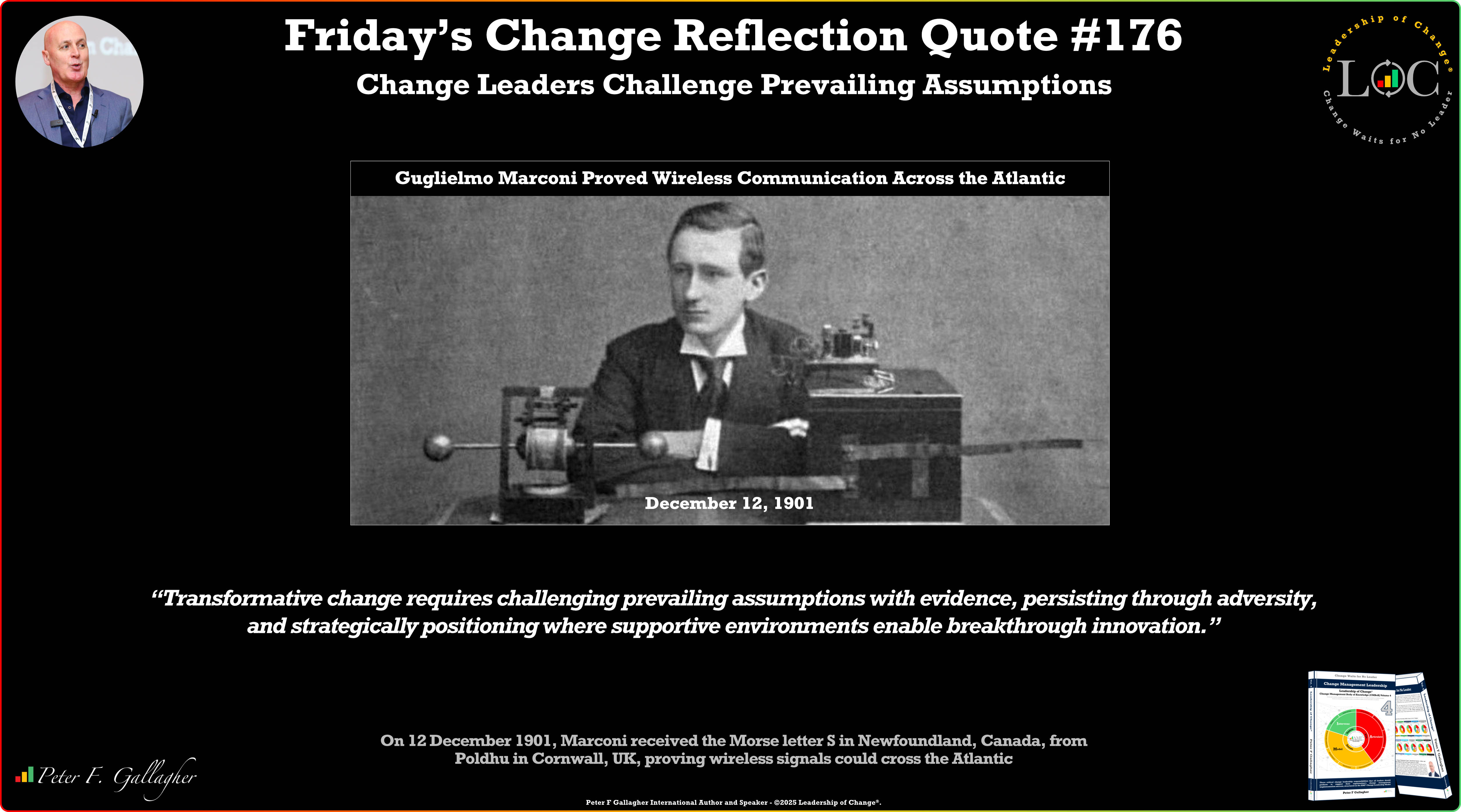Jun20

When Everyone Attends but No One Participates: The Hidden Cost of Unprotected Meetings
Every Tuesday at 2 PM, the same 12 people walked into the same conference room to discuss the same agenda.
Point 1 was always the starting point.
But we never made it past that.
Instead, it unraveled into cross-functional complaints, outdated grievances, and irrelevant debates.
Two hours later, the only consistent outcomes were:
No clarity
No decisions
No next steps
Just 12 drained people silently wondering: Why are we even here?
Most meeting failures aren’t due to poor content or weak facilitation skills.
They fail because no one holds the line on why the meeting exists in the first place.
No one enforces relevance.
No one interrupts the tangents.
No one calls time on distractions.
No one reminds the room: What are we actually here to achieve?
This isn’t a tactical slip. It’s a strategic erosion.
And over time, it has a compounding effect — not on calendar space, but on contribution energy.
Here’s what actually erodes in meetings that lack discipline:
Trust: People start withholding, not because they lack ideas, but because they’ve stopped believing anything will change.
Energy: The most capable contributors mentally check out, not out of laziness, but as a self-preservation tactic.
Accountability: When there are no real outcomes, there’s no pressure to show up with intent, just to show up at all.
And slowly, the organization starts rewarding attendance over impact, visibility over value, speaking time over contribution quality.
Participation isn’t about speaking up.
It’s about believing your input matters.
If the system keeps demonstrating that it doesn’t, people adapt accordingly.
This is why silent meetings aren’t a people problem.
They’re a design problem.
And like all broken systems, it starts with good intent… and dies in poor protection.
What exactly are we trying to move forward in this meeting — and is a meeting the best way to do it?
Who needs to be here to move it forward, not just to listen?
What does successful participation look like for each person in the room?
And once the meeting starts, protect that intent like a non-negotiable.
Because if you don’t, the meeting will be hijacked.
Not by bad people, but by the absence of boundaries.
Let’s be honest - people are tired.
Not because they’re lazy or disengaged.
But because systems have trained them that their time isn’t respected.
We often talk about inclusion in terms of diversity.
But inclusion also means creating spaces where contribution feels worth the effort.
And that begins - quite simply - by protecting the purpose of the room.
Keywords: Leadership, Culture, Transformation
 Data Isn’t the Problem. Alignment Is.
Data Isn’t the Problem. Alignment Is. Friday’s Change Reflection Quote - Leadership of Change - Change Leaders Challenge Prevailing Assumptions
Friday’s Change Reflection Quote - Leadership of Change - Change Leaders Challenge Prevailing Assumptions The Corix Partners Friday Reading List - December 12, 2025
The Corix Partners Friday Reading List - December 12, 2025 Measuring the True ROI of Automated Claims Processes: Beyond Speed and Cost
Measuring the True ROI of Automated Claims Processes: Beyond Speed and Cost The New Silicon Frontier: Specialization and the Diverse Landscape of AI Chips
The New Silicon Frontier: Specialization and the Diverse Landscape of AI Chips